You also want an ePaper? Increase the reach of your titles
YUMPU automatically turns print PDFs into web optimized ePapers that Google loves.
BroadcastPetter Ole JakobsenCTO / <strong>Vizrt</strong>Petter Ole has 20 years of experience from the broadcast industry, holdingamong other the position as Senior Development Editor at TV 2 in Norway.Solving the multiplatformpuzzlePetter Ole Jakobsen is firm in his belief; new channels and platformswill make life more <strong>com</strong>plex for broadcasters and publishers in theyears to <strong>com</strong>e. But then he’s also a firm believer in helping out.During the last couple of years technologicalinnovation seems to have clickedinto a secret sixth gear – and acceleratedquicker than anyone could have imagined.From your point of view, which of thecurrent industry trends are the mostexiting?– My answer to that is without a doubtthe emergence of multiple platforms, andthe challenges facing everyone tryingto bend their heads around solving it. Itincreases the <strong>com</strong>plexity of the broadcastworkflow tremendously, yet at same timerichly rewards those with a solid foundationto publish from, both editorially and from amore technical point of view. In this world,a lot of different products need to interact,which is no easy task. At the same time,maintaining several parallel workflows isnot an option in the long run. That wouldindeed be<strong>com</strong>e very expensive. It’s not agood thing editorial wise either. You’ll findyourself buried in a pile of inputs, forcingyour staff to make costly on-air errors.What is <strong>Vizrt</strong>’s solution to theproblem?– Over the last five years, <strong>Vizrt</strong> has developeda unique platform workflow that letsyou publish to TV directly from your preferrednewsroom system. Simultaneously,the same personnel can also publishdedicated versions of the same story online,to different mobile phones, various tablets,and so on. On top of that, we convert andoptimize both video and graphics, dependingon the recipient’s screen resolutions.– Interesting. How do you do it?– Graphics designed to run in full HDwon’t look good on your iPhone. That’s whywe scale the graphics to match, for example,and iPhone sized screen. All this is carriedout on the fly, as part of the processingitself, making the graphics easier to readon each device, providing a much betterend-user experience. At the same time youmay also use those graphics and their correspondingdesign on all platforms, even ifthey only were meant for TV initially, anddistribute them to all your designers andViz Engines through Viz Graphics Hub.Our very own dropbox.Dropbox?– Viz Graphics Hub is a solution tailoredfor distributing graphics between differentTV stations or between each station’svarious offices. The Graphics Hub runs overthe Internet and takes advantage of smartsyncing, a must for most TV stations, stationgroups and media houses – nearly all nowincreasing their number of channels.It’s an exiting trend. Did it mean thatyou had to rethink how you assembledyour own products?– Of course it did. Among other things,it sets a new standard when it <strong>com</strong>es to reliability.Each product’s ability to scale is alsogreatly increased. There’s no longer room forduct tape and paper clips. A media house canhave 10-20-30 channels running on the sameinfrastructure, making stable and gooddelivery extremely important. All in all, thefile-based workflow has handed us, as wellas the TV channels, a whole range of newpossibilities and challenges.Sounds good. Anything excitingand new up your sleeve, there?– At this year’s NAB, we launched theViz Media Engine. It’s a very exiting productwhich we’ve put a lot of thought and effortinto, and a product I have great expectationsattached to. We’re essentially trying to redefinehow the industry handles its file-basedworkflows. We’ve adjusted the workflow,based on how we feel it should be done andwhat our customers have told us. In orderto improve your workflow, the Viz MediaEngine can also be plugged on top of mostmedia asset storage solutions out there.A-ha. So you distinguish between afile-based workflow andstorage?– Yes, and I believe this is important forthe future. A file-based workflow is considerablymore than just digital storage ofedited stories and raw material. By usingViz Media Engine, you gain a united andeffective workflow, from acquisition to playoutand/or distribution.… Meaning that this workflow is available,even if you just recently boughta MAM system without an optimalworkflow?– We’ve spent a considerable amount of timebuilding our APIs. They’re open and RESTful.Through these, we can interface up against mostof the solutions out there, thus letting the Viz MediaEngine collect the files and place them where youwant them to be published.But how does the transcoding anddistribution happen?– It’s possible to use whatever transcoding solutionyou desire, obviously. But the Viz Media Engine has itsown specialized transcoding and encoding <strong>com</strong>ponent,making sure that everything works seamlessly andthat video and graphics are optimized for each device’sdisplay. As mentioned earlier, it’s also possible to insertgraphics at this stage.OK, so how is the actual online publishingpart done?– Again, you’re free to use an existing system, but<strong>Vizrt</strong> also offers a newsroom system tailored to fulfillthe requirements of multi platform publishing; theViz Online Suite. The system supports online publishing,connected TVs, as well as mobile web and apps.Anything else to add?– <strong>Vizrt</strong> wants to make innovative, effective andreliable products. The best part is that our customersrespond positively when using them. No media houseis too small, nor too big, to take advantage of <strong>Vizrt</strong>’sproduct portfolio. It’s that simple.The <strong>Vizrt</strong> Catalogue 2011 27


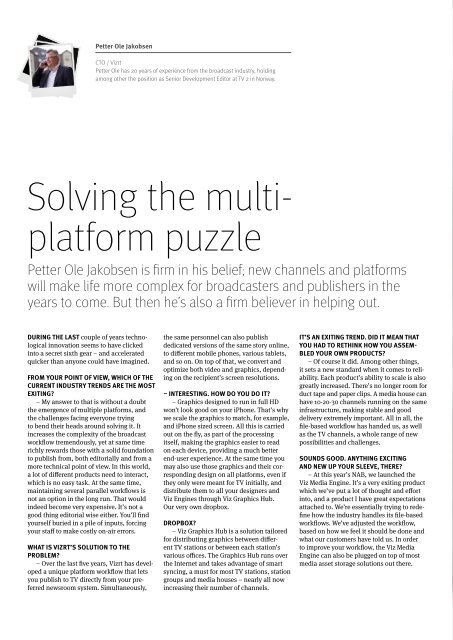

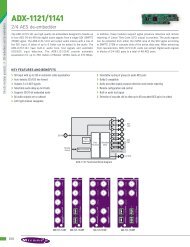

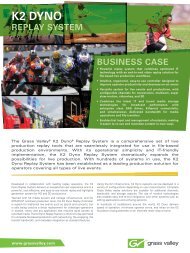
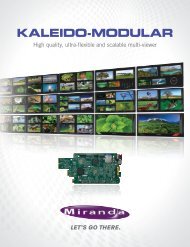
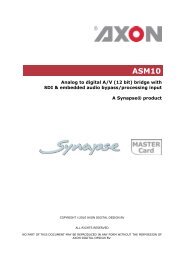
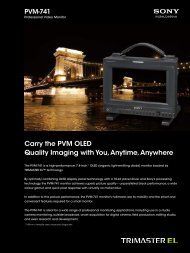
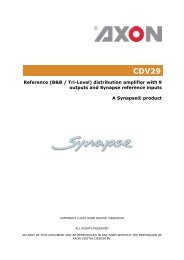
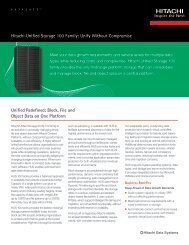
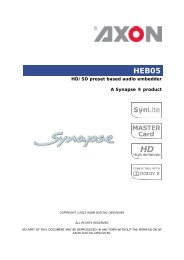

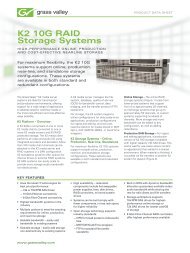
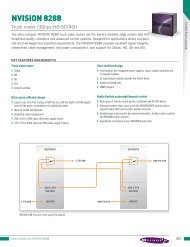
![Datasheet [pdf 653.2kb] - DK-Technologies](https://img.yumpu.com/38904183/1/184x260/datasheet-pdf-6532kb-dk-technologies.jpg?quality=85)